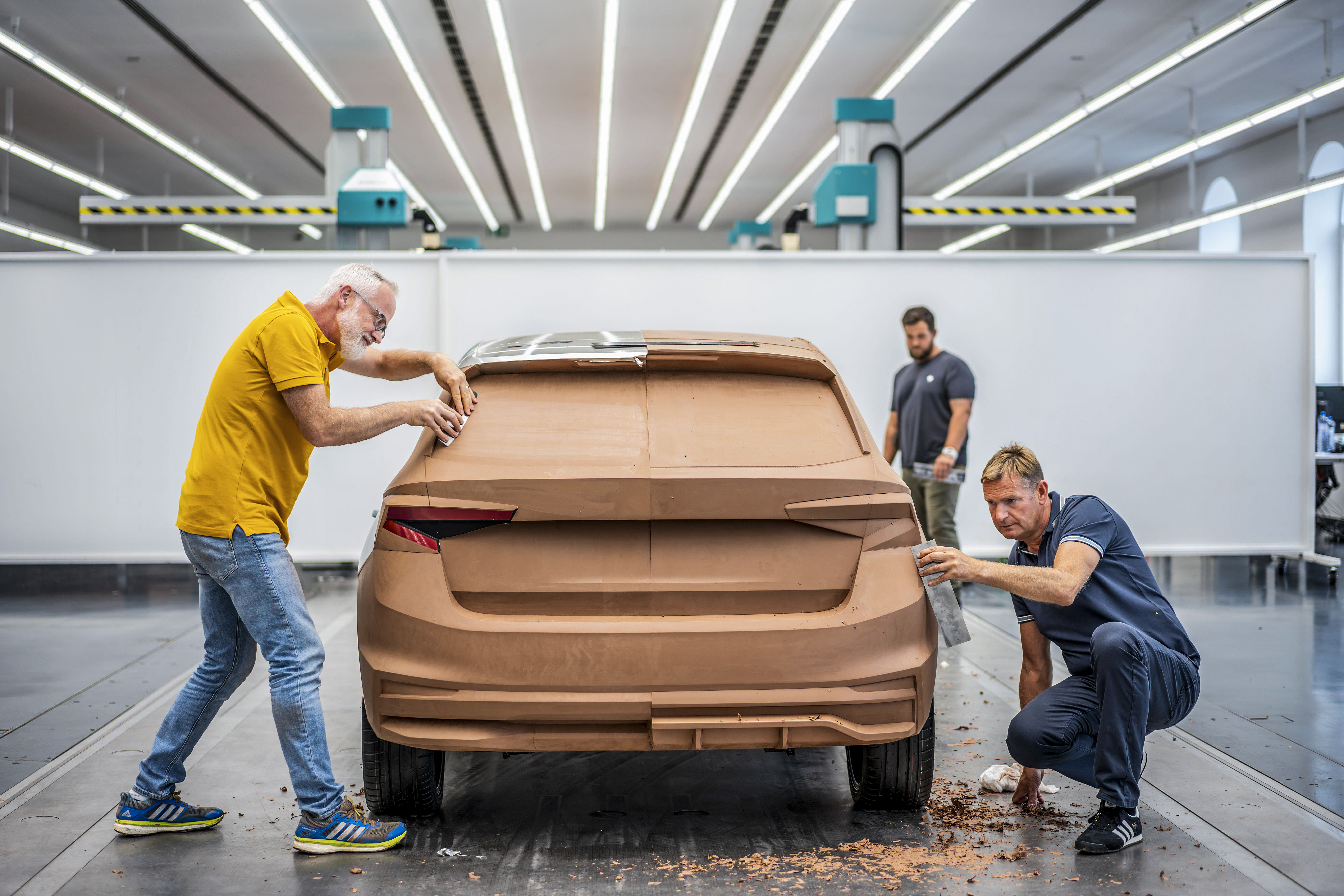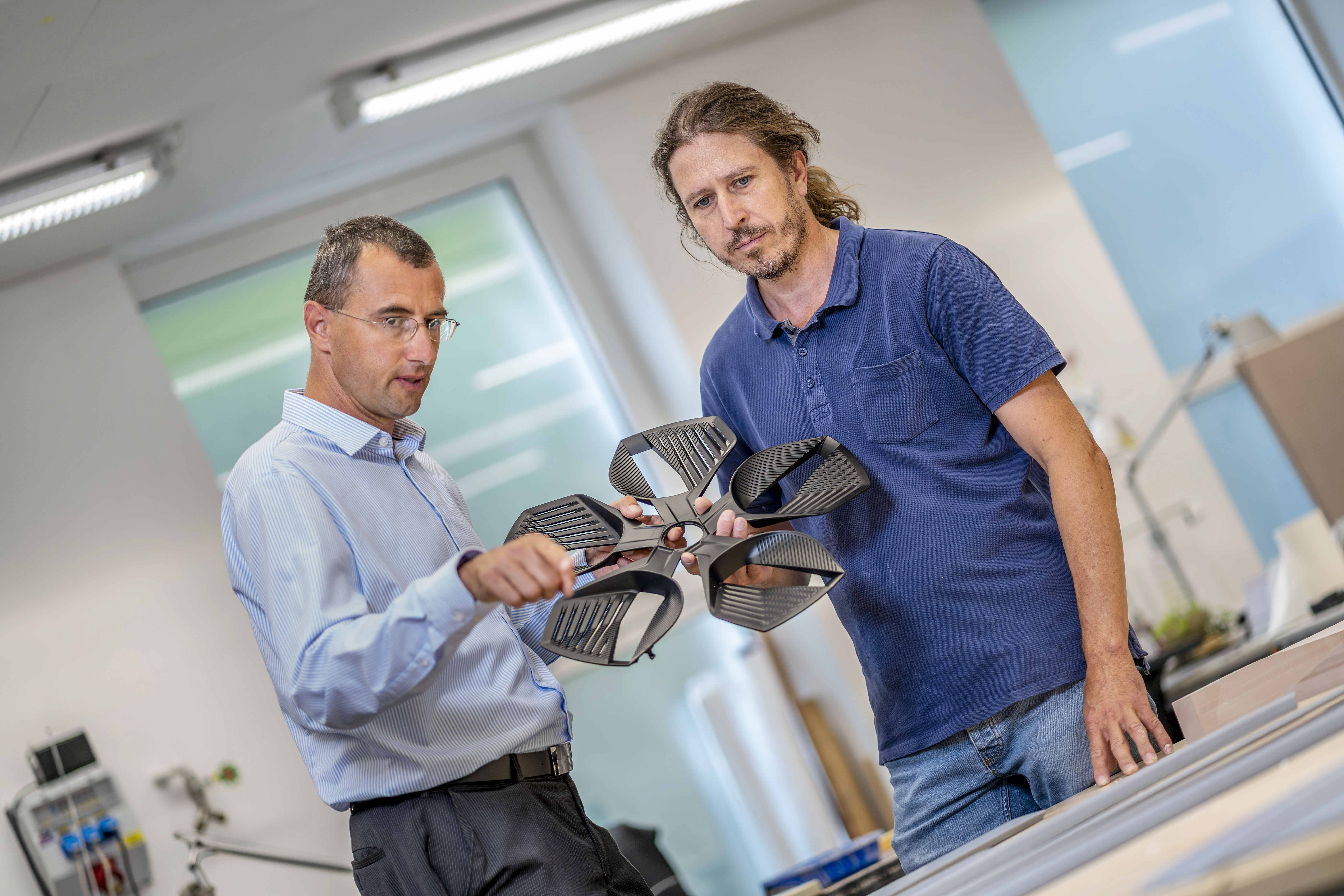Clay and cutting tools
Physical model making at ŠKODA AUTO is headed by Vlastimil Pažout, who oversees the activities of three studios: exterior, interior and components. The exterior studio is the largest model building workplace – its hall can accommodate up to seven 1:1 scale models. By the way, smaller models are hardly ever made at ŠKODA, the last being the eVoiturette vision from the Icons Get a Makeover series.
“When working on concepts for car shows and for future production cars, we do everything at 1:1 scale, because some details might not stand out at a smaller scale,” explains Vlastimil Pažout.

Visitors to the studio might be surprised by the large milling machines. These are part of the car’s transition from the digital world to the physical one. While modellers used to shape cars out of clay completely by hand, today the milling machine does the basic work. The basis of the model’s construction is a steel frame fitted with foam pieces, and a layer of clay is applied to this skeleton. This is heated to 50-60 °C in a special oven, making the clay very malleable and easy to bond. After cooling to normal room temperature, it hardens. This is also one of the reasons why models are not made entirely of clay. Besides being extremely heavy (they weigh several tonnes even so) and expensive, the clay could crack or even come off in chunks.
“After the base layer is applied, the machine cuts the clay into the basic shape that was prepared by digital modellers in collaboration with the designers,” says Vlastimil Pažout. Once the structure has been given the basic outline, the modellers’ work begins. Using scrapers, knives, trowels and other tools, they fine-tune the original lines, which are usually “a bit sharp” after the initial milling.

The result of their work is then scanned and converted into a 3D model that can be worked with further and used as a basis for further milling or design visualisations and digital presentations. In fact, several alternative designs are created for each car when developing the car’s appearance, and one of them is chosen for the final design path. “Model makers are artists and masters of their craft. Together with the designer, they basically sketch in clay, applying their artistic skill and experience. At the same time they have to be fully in sync with the designer,” says Vlastimil Pažout.


































